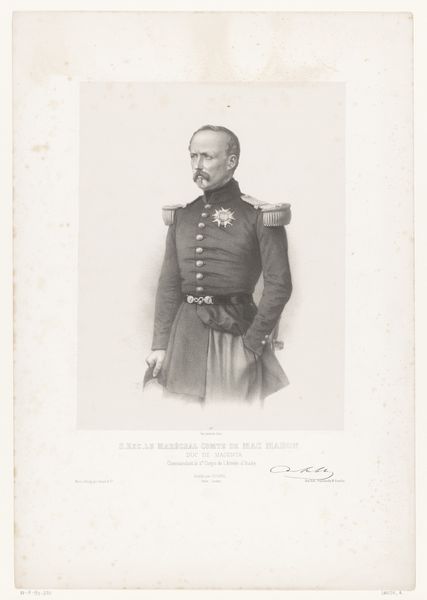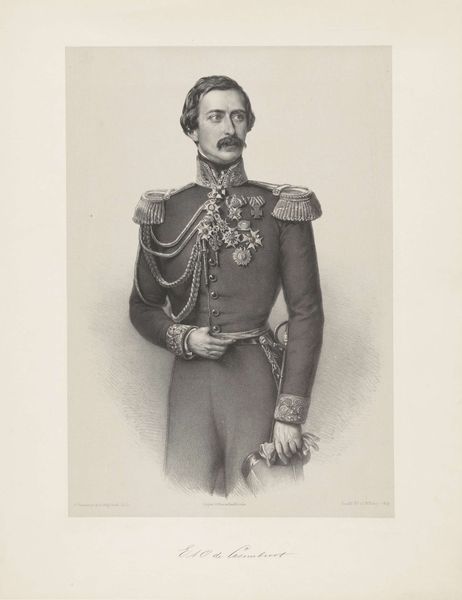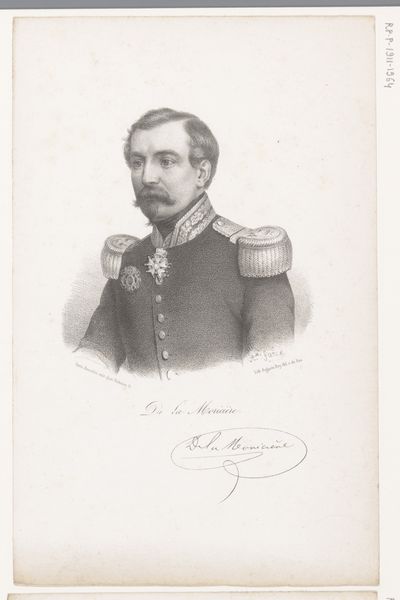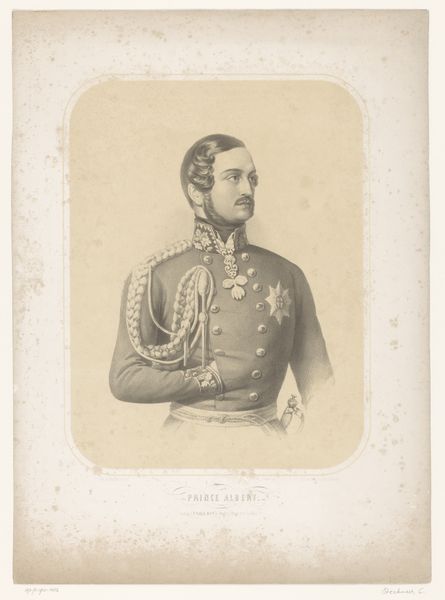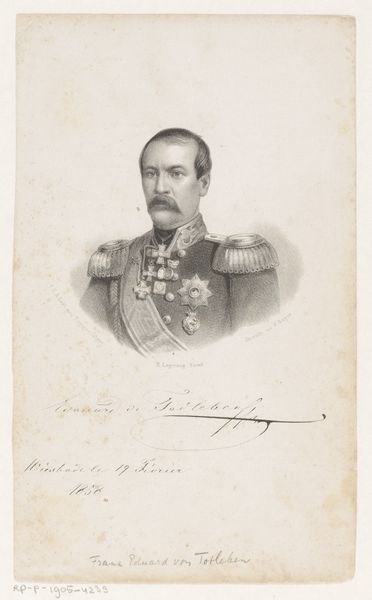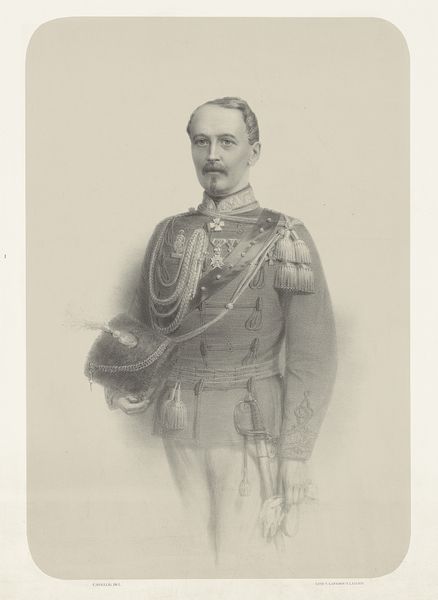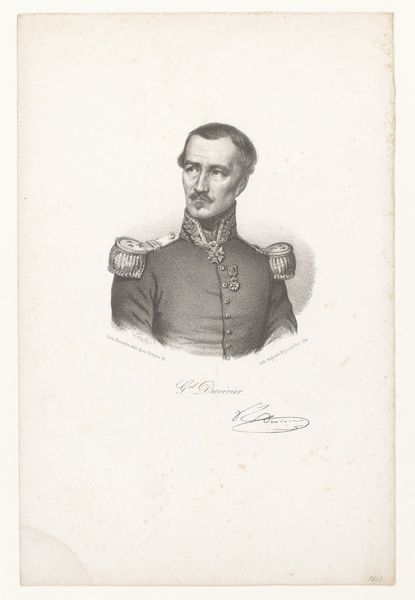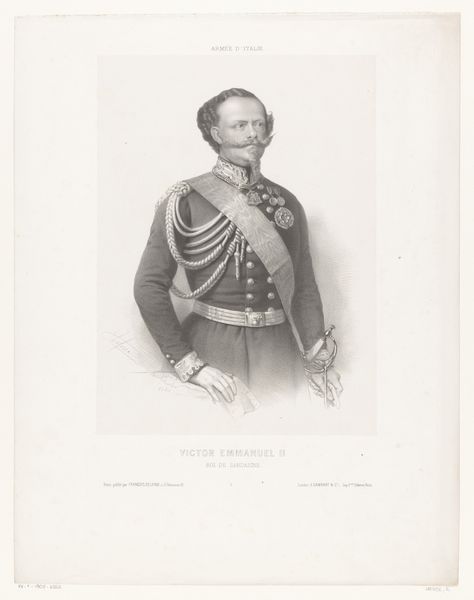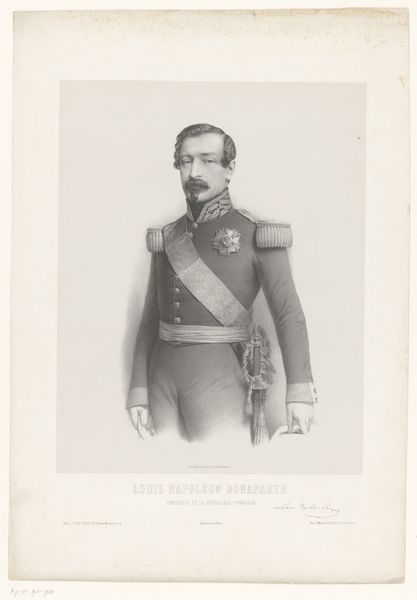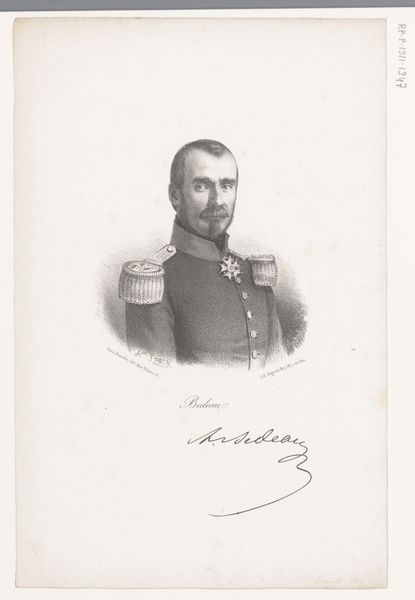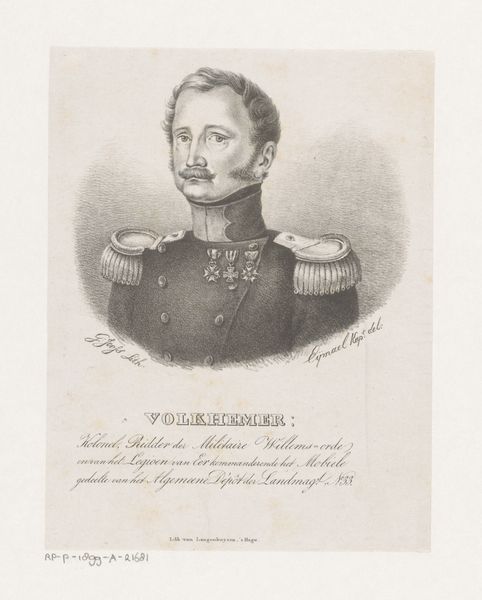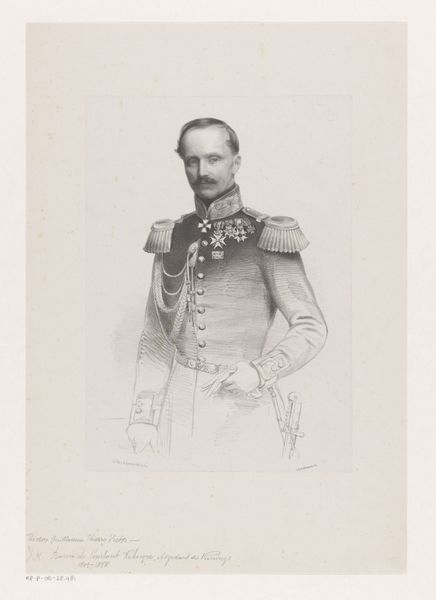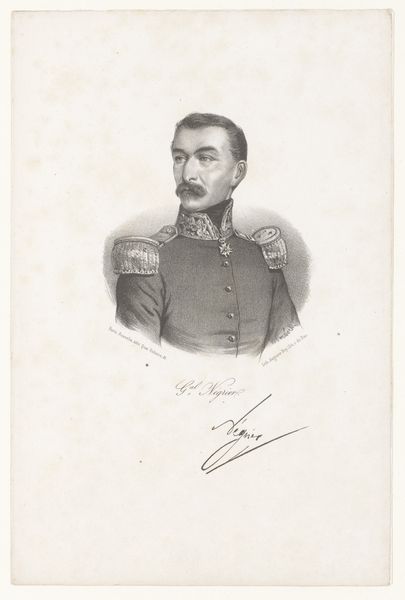
graphite, engraving
#
portrait
#
graphite
#
history-painting
#
academic-art
#
engraving
#
realism
Dimensions: height 195 mm, width 125 mm
Copyright: Rijks Museum: Open Domain
Curator: Right, let's dive in. This engraving is a portrait of Ludwig Schweiger von Dürnstein, created by Carl Kotterba in 1857. Editor: Hmm, the uniform gives a strong sense of authority, but something in the eyes feels almost melancholic. Curator: Absolutely. Look at the meticulous detail Kotterba achieves using graphite, translated here through the engraving process. It's a striking example of 19th-century realism blended with academic portraiture, and quite an exacting medium. Editor: There's a tension between the rigidity of his profession, hinted at by the stern, almost lifeless execution, versus the humanity in his slightly drooped gaze. Makes me think about all the labor and craft that has gone into a life of labor. Curator: Indeed. Consider the social context. Schweiger von Dürnstein was a military referent and director of the gendarmerie. Kotterba presents not just a likeness but an object which asserts the subject's status and participation within complex sociopolitical apparatus. Editor: And the medals! They become these almost abstracted light reflecting, geometrical planes against his rigid breast. It's an arresting effect of textures--they look like frozen tears or sweat! Curator: Interesting idea. Also, consider that engravings like these served a vital function, they facilitated image dissemination before widespread photographic reproduction. We can read the material reality of art here within printmaking traditions and burgeoning media industries. Editor: It's a compelling glimpse into a person both ordinary and, simultaneously because of his profession, distant and important in the social hierarchy. I admire Kotterba for his ability to create, in so stark and traditional form, the ghost of humanity. Curator: A poignant observation. Studying the materiality reveals the complex layering of both political symbolism and artistry at play. Editor: And from that process emerges humanity--labor in the act of viewing!
Comments
No comments
Be the first to comment and join the conversation on the ultimate creative platform.
